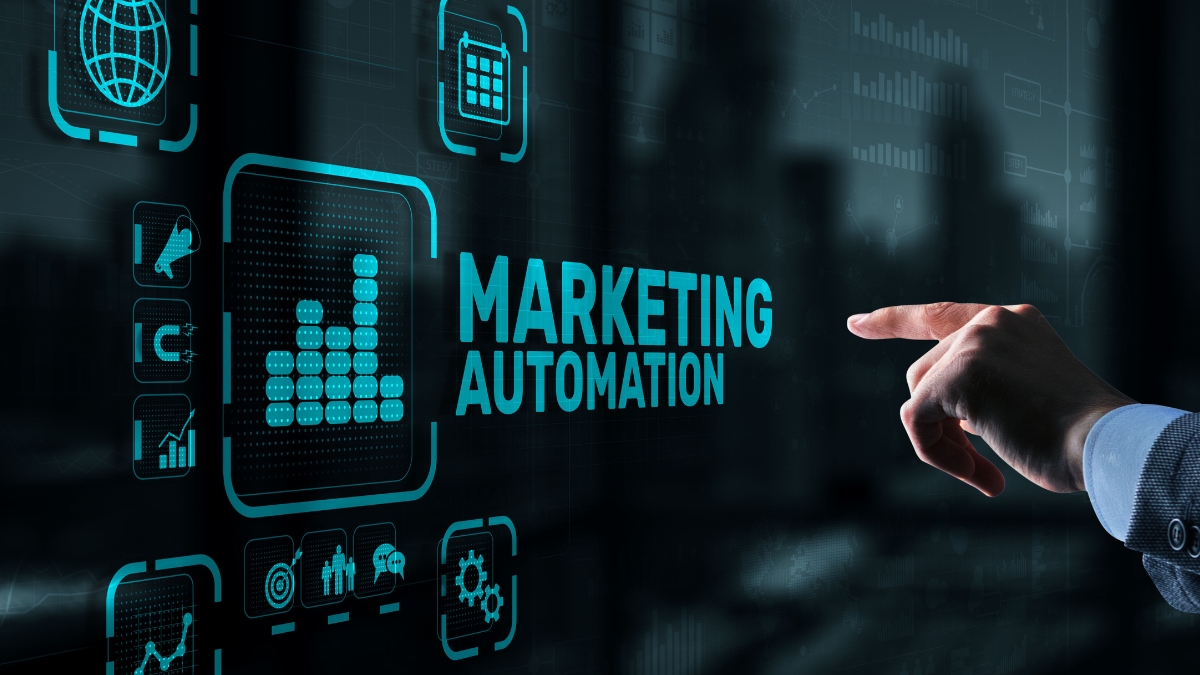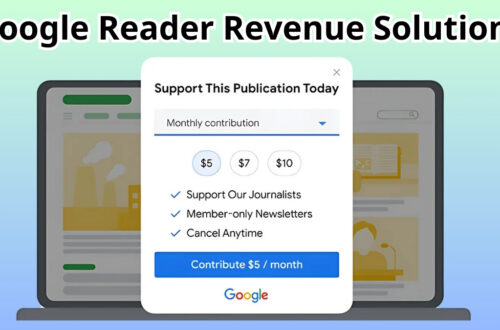
Print on Demand Business Automation Guide 2025: Scale Your POD Empire Without The Burnout
Did you know that the global print on demand market is projected to reach $39.87 billion by 2030? As entrepreneurs flood this space, automation isn’t just a luxury – it’s becoming essential for survival. In this comprehensive guide, I’ll show you exactly how to transform your print on demand business from a time-consuming hustle into a streamlined, automated money-making machine. Let’s turn those 3 AM fulfillment sessions into peaceful nights of rest while your business runs on autopilot!
Understanding Print on Demand Automation Fundamentals
You know what’s wild? I remember when I thought manually uploading designs and tracking orders in spreadsheets was “good enough.” Boy, was I wrong! It wasn’t until I lost an entire weekend fixing inventory sync issues that I realized automation wasn’t just nice to have – it was absolutely essential for maintaining my sanity and scaling my business.
Let’s break down the core components of POD automation that you absolutely need to understand. Think of these as the building blocks of your automated POD empire:
Design Upload and Management: This is where everything begins. A solid automation system should handle bulk design uploads, variant creation, and mock-up generation. I learned the hard way that trying to manually create variants for each design across multiple products is a recipe for burnout. Your automation system should be able to take one design and automatically generate all the necessary product variations and mock-ups.
Order Processing Workflow: This is the heart of your operation. A well-automated order processing system should handle everything from order capture to routing to the appropriate print provider, tracking generation, and customer notifications. When I first started, I was copying and pasting order details between platforms – what a nightmare that was!
Inventory and Pricing Sync: This component ensures your stock levels and prices stay consistent across all your sales channels. Remember that time Amazon had a flash sale and my manual inventory tracking couldn’t keep up? Yeah, that led to some awkward customer conversations. Your automation system needs to handle real-time inventory updates and pricing adjustments across all platforms.

Now, let’s talk about those pesky bottlenecks that can kill your growth faster than a printer running out of ink. The biggest one I’ve seen is poor integration between platforms. When your Etsy store doesn’t talk properly to your print provider, or your inventory numbers get out of sync, it creates a massive headache. Another common bottleneck is inadequate error handling – your automation needs to gracefully handle issues like temporary API outages or failed uploads.
As for metrics, these are the numbers you absolutely need to track:
Order Processing Time: This shows how quickly orders move through your automated system. I aim for under 5 minutes from order placement to print provider submission.
Error Rate: Track how many orders require manual intervention. Anything above 5% means your automation needs tweaking.
Integration Uptime: Monitor how reliably your various platforms communicate with each other. One flaky connection can bring everything to a halt.
When it comes to cost-benefit analysis, here’s the real talk: While setting up automation requires an upfront investment of both time and money, the returns are astronomical. Let me share some concrete numbers – when I automated my design upload process, what used to take 2 hours now takes 10 minutes. That’s a 92% reduction in time spent on just one task!
The key is to start small and automate one process at a time. I began with design uploads, then moved to order processing, and finally tackled inventory management. Each step produced measurable time savings that I could reinvest in growing my business.
Remember, POD automation isn’t about replacing human creativity – it’s about freeing up your time to focus on what really matters: creating awesome designs and building your brand. Start with these fundamentals, and you’ll be well on your way to building a POD business that runs like a well-oiled machine!
Boost your Etsy shop’s success with Etsy Masterclass Downloads! These expert resources provide step-by-step guidance on creating standout product listings, mastering Etsy SEO, and driving consistent traffic to your store. Learn proven strategies for pricing, branding, and customer engagement to grow your business effectively. Ideal for both beginners and seasoned sellers looking to maximize their sales. Start building your dream Etsy shop today!
Essential POD Automation Tools and Software
After spending countless hours testing different POD automation tools (and learning some expensive lessons along the way!), I’ve discovered which platforms actually deliver results and which ones just create more headaches. Let me share what I’ve learned about the essential tools that can transform your POD business.
First, let’s talk about the big players in POD automation platforms. I started with Printful because everyone recommended it, and I’ll admit – their automation capabilities are pretty impressive. Their API is rock-solid, and their Shopify integration is basically bulletproof. But here’s something most people won’t tell you: while Printful’s automation is fantastic, their pricing can eat into your margins if you’re not careful. I learned to use them strategically for products where their premium quality justifies the higher costs.
Printify, on the other hand, really shines when it comes to print provider flexibility. I love how their automation lets you switch between providers if one is backed up or having issues. There was this one time during holiday season when my main provider got swamped – Printify’s automation instantly re-routed my orders to another printer, saving my Christmas sales! However, their mock-up generator can be a bit finicky sometimes, so I recommend batch processing your designs during off-peak hours.
Now, for order management and fulfillment – this is where things get interesting. I’ve found that Multiorders is an absolute game-changer. It automatically syncs orders across all your sales channels and print providers. Remember when we used to manually copy-paste order details? Those days are gone! The system even handles tracking number updates and customer notifications automatically.
For design uploads and listing creation, I swear by ProductBundles (and no, they’re not paying me to say this!). After spending weeks manually creating listings, discovering their bulk upload feature was like finding gold. You can upload one design and automatically create listings across multiple products and platforms. But here’s a pro tip: always test new automation tools with a small batch first. I learned this the hard way after once accidentally creating 500 listings with the wrong price tag!

When it comes to inventory and pricing synchronization, I’ve found that Stockbot works wonders. It monitors your inventory levels across all platforms in real-time and adjusts your pricing based on predetermined rules. Just last month, it automatically increased my prices during a sudden surge in demand, protecting my profit margins without any manual intervention.
For customer service automation, Gorgias has become my secret weapon. It integrates with all major POD platforms and can automatically handle common customer queries like order status updates and shipping delays. I’ve set up automated responses for frequently asked questions, but here’s the clever part – it knows when to escalate issues to a human. This has cut my customer service workload by about 70% while maintaining high satisfaction rates.
One tool that doesn’t get enough attention is Zapier’s POD integrations. I use it to create custom automation workflows that fill the gaps between major platforms. For example, I created a Zap that automatically adds customers to my email list and triggers a welcome sequence when they make their first purchase.
But let’s be real – these tools aren’t magic bullets. You need to invest time in setting them up properly and maintaining them. I spend about an hour each week reviewing my automation workflows and tweaking them based on performance data. Think of it like tending a garden – regular maintenance prevents small issues from becoming big problems.
The key is to start with one tool that addresses your biggest pain point. For me, that was design uploads and listing creation. Once that was running smoothly, I added order management automation, then inventory sync, and finally customer service tools. Building your automation stack gradually lets you master each tool before adding another layer of complexity.
Remember, the goal isn’t to automate everything – it’s to automate the repetitive tasks that drain your time and energy. This frees you up to focus on the creative aspects of your business that actually need human touch, like design creation and brand building. Trust me, your future self will thank you for setting up these automation tools now!
Setting Up Your POD Automation Workflow
Let’s start with automated product research, which honestly changed the game for me. I used to spend hours manually checking different marketplaces for trending products. Now? I’ve got a sweet little system using Google Trends API and some custom scripts that monitor bestseller lists. Here’s the crazy part – I discovered one of my best-selling designs through automated trend tracking. It spotted a niche pet trend three weeks before it exploded!
For automated product research, I’ve set up what I call my “trend triangle”:
- Market research tools that track competitor pricing and sales velocity
- Social media monitoring for emerging trends in my niches
- Automated keyword tracking to spot rising search terms
Now, let’s talk about design uploads and listing creation – this used to be my biggest time sink! I remember spending an entire weekend uploading just 50 designs across different platforms. These days, I use a combination of tools that cut that time down to about 30 minutes. The key is to set up a standardized folder structure for your designs and use bulk upload tools with proper naming conventions.
But here’s something nobody tells you about automated design uploads – you need to build in quality control checkpoints. I learned this the hard way after uploading 200 designs with a slight color variation that looked terrible on mugs. Now my automation workflow includes automatic mock-up generation and a quick visual review step before anything goes live.
Order tracking and fulfillment automation was another game-changer. I’ve set up a system that automatically:
- Routes orders to the most cost-effective print provider
- Generates tracking numbers and updates all sales channels
- Flags any potential fulfillment issues for manual review
- Syncs inventory levels across all platforms
The secret sauce? Integration webhooks. They’re like little digital postal workers, making sure every piece of information gets where it needs to go instantly.

For quality control, I’ve created what I call “automation guardrails.” These are automated checkpoints that flag potential issues before they become problems. My system automatically checks for:
- Design resolution and placement issues
- Pricing anomalies across platforms
- Unusual order patterns that might indicate problems
- Shipping delays or fulfillment bottlenecks
Customer communication was the final piece of my automation puzzle. I resisted automating this at first – worried it would feel too robotic. But I found a sweet spot by creating highly personalized automated messages. My system now automatically:
- Sends order confirmations with expected production times
- Provides shipping updates with real-time tracking
- Asks for reviews after confirmed delivery
- Responds to common customer queries
The game-changing moment came when I set up automated segmentation. Customers who order certain products automatically get tagged and receive specific follow-up sequences. For example, someone who buys a pet-themed product gets different communications than someone who buys wall art.
One thing I wish someone had told me earlier: start with a simple workflow and gradually add complexity. I originally tried to automate everything at once and ended up with a tangled mess. Now I follow the “rule of three” – automate three tasks, make sure they’re working perfectly, then add the next three.
Remember, automation isn’t about removing the human element – it’s about freeing up your time to focus on the parts of your business that really need your creativity and personal touch. Start small, test thoroughly, and gradually build up your automated workflow. Your future self will thank you when you’re sleeping through the night instead of manually processing orders at 3 AM!
Marketing and Sales Automation Strategies
I’ve spent years fine-tuning my POD marketing automation, and boy, do I have some stories to share! Let me tell you about the time I accidentally scheduled the same post 47 times on Instagram (thankfully, I caught it before they all went live). But these learning experiences have helped me develop a marketing automation system that practically runs itself.
Let’s dive into social media automation first. I’ve found that the key isn’t just scheduling posts – it’s creating what I call “content multiplication.” Here’s my secret sauce: I use a combination of tools to take one piece of content and automatically adapt it for different platforms. For instance, when I launch a new design, my automation system:
- Generates platform-specific images and captions
- Schedules posts at optimal times based on engagement data
- Monitors hashtag performance and adjusts automatically
- Cross-promotes across platforms without looking spammy
But here’s the thing about social media automation – you need to maintain that human touch. I learned this after my posts started sounding like a robot wrote them! Now I batch create personal, engaging captions and let the automation handle the technical stuff like timing and cross-posting.
Email marketing automation has been absolutely transformative for my business. I’ve set up what I call my “customer journey cascade” – a series of automated email sequences triggered by specific customer actions. For example, when someone purchases a custom pet portrait design, they automatically enter a sequence that:
- Thanks them and provides production updates
- Shares care instructions for their product
- Offers a discount on matching items
- Requests a review after delivery
The results? My repeat customer rate jumped from 12% to 28% after implementing these targeted sequences
Now, let’s talk about cross-platform listing management – this is where things get really interesting. I used to spend hours ensuring my listings were consistent across Etsy, Shopify, and other platforms. These days, my automation system handles:
- Price adjustments based on platform fees and competition
- Inventory synchronization across all channels
- Description updates and optimization
- Seasonal keyword adjustments
One game-changing tip: I’ve set up automated A/B testing for my listings. Different titles and descriptions are automatically tested and rotated based on performance data. It’s like having a full-time optimization team working 24/7!

Customer review automation was tricky to get right. You can’t just blast everyone with review requests – that’s a fast track to annoyed customers. Instead, I’ve created what I call “review triggers” based on:
- Delivery confirmation
- Product type
- Customer interaction history
- Previous purchase behavior
The system automatically identifies happy customers (based on their interaction patterns) and sends personalized review requests at the optimal time. My review rate has doubled since implementing this approach!
For promotional campaigns, I’ve built what I call my “promotional pyramid” – an automated system that coordinates promotions across all channels. When I launch a sale:
- Email sequences are automatically triggered
- Social media posts are scheduled
- Platform listings are updated
- Ad campaigns are adjusted
- Inventory levels are monitored
But here’s a crucial lesson I learned: always build in safety nets. I once had an automation glitch that tried to set all my prices to $0.99 – thankfully, I had price change limits in place that prevented disaster!
The real magic happens when all these systems work together. For example, when a new design performs well on one platform, my automation:
- Prioritizes it in social media scheduling
- Adjusts email marketing to feature it more prominently
- Optimizes listings across other platforms
- Triggers targeted ad campaigns
Remember though, marketing automation isn’t “set it and forget it.” I spend about 2-3 hours each week reviewing performance metrics and making adjustments. Think of it like tending a garden – you need to prune and adjust regularly to keep everything healthy and growing.
Pro tip: Start with email automation. It’s the easiest to set up and usually shows the quickest return on investment. Then gradually expand to social media and cross-platform management as you get comfortable with the systems.
The goal isn’t to remove the personal touch from your marketing – it’s to handle the repetitive tasks so you can focus on creating genuine connections with your customers. When done right, automation makes your marketing more personal, not less, because you have more time to focus on what really matters!
Financial and Analytics Automation
Let me tell you about how I transformed my POD business’s financial management from a monthly panic attack into a smooth, automated system. Trust me, I’ve been through those late nights frantically reconciling spreadsheets and trying to figure out where my money went!
The breakthrough came when I finally decided to tackle profit tracking automation. I remember the moment clearly – I had just spent an entire weekend trying to calculate my actual profits across multiple platforms, only to realize I’d forgotten to account for shipping cost variations. That was my wake-up call! Now, I’ve set up an automated system that tracks every penny:
- Real-time cost calculation for each order
- Platform fee monitoring and allocation
- Shipping cost variations by region
- Profit margin calculations by product type
Here’s something most POD sellers don’t realize about pricing optimization – manual price adjustments just can’t keep up with market dynamics. I learned this expensive lesson during last year’s holiday season when my competitors’ prices were changing hourly. Now my automated pricing system:
- Adjusts prices based on demand patterns
- Monitors competitor pricing across platforms
- Maintains minimum profit margins automatically
- Implements dynamic pricing during peak periods
The real game-changer was implementing sales analytics automation. I used to check my sales numbers obsessively throughout the day (admit it, you’ve done this too!). Now my analytics system automatically:
- Generates daily performance reports
- Identifies trending products
- Flags underperforming listings
- Tracks marketing campaign ROI
Let me share a painful lesson about tax automation – I once thought I could handle it manually with a simple spreadsheet. Big mistake! After nearly missing a tax deadline because I’d miscalculated sales tax across different states, I invested in proper tax automation. My current system:
- Tracks sales tax by jurisdiction
- Categorizes expenses automatically
- Generates quarterly tax reports
- Maintains digital receipts and documentation

ROI tracking was another eye-opener. I discovered that what I thought was my best-selling product line actually had the lowest profit margin after accounting for all costs. My automated ROI tracking now monitors:
- Marketing spend versus revenue
- Platform-specific performance metrics
- Product-level profitability
- Customer acquisition costs
A word of caution though – automation needs regular auditing. I schedule monthly “financial health checks” where I review the automated reports and look for any anomalies. Remember that one time my system categorized all my advertising costs as “miscellaneous” for a month? Yeah, that took some cleaning up!
The key to successful financial automation is starting with clean data. I spent a full week organizing my historical data before implementing automation, and it was worth every minute. Now my system can spot trends and patterns I never would have noticed manually.
Pro tip: Set up automated alerts for key metrics. I have notifications set for:
- Sudden drops in profit margins
- Unusual expense patterns
- Higher than normal refund rates
- Sales tax threshold approaches
This way, I can address issues before they become problems, rather than discovering them during monthly reconciliation.
Remember, financial automation isn’t about removing yourself from the equation – it’s about giving yourself the data and insights you need to make better business decisions. Start with basic profit tracking, then gradually add layers of sophistication as your business grows. Your stress levels (and your accountant) will thank you!
Troubleshooting and Optimization
I’ve seen just about every automation disaster you can imagine in the POD world. Let me share what I’ve learned from countless troubleshooting sessions and late-night system crashes – including that memorable Black Friday when my entire automation system decided to take an unscheduled vacation!
First, let’s talk about common automation failures. The most frequent issue I’ve encountered is what I call the “sync cascade” – when one small sync error creates a domino effect across your entire system. I remember one particularly painful incident where a single API timeout caused hundreds of orders to get stuck in limbo. Now, I always implement these essential failsafes:
- Automated error logging with instant notifications
- Retry logic for failed API calls
- Data validation checkpoints
- Order status verification loops
Performance monitoring became my obsession after losing a full day’s worth of orders to a system slowdown. The trick isn’t just monitoring – it’s knowing what to monitor. I’ve found these metrics to be critical:
- API response times across platforms
- Order processing delays
- System resource usage
- Error frequency and patterns
Here’s a secret about scaling automated systems that nobody told me: it’s not just about handling more volume. I learned this when scaling from 100 to 1,000 orders per day. Your automation needs to grow smarter, not just bigger. My scaling strategy now includes:
- Load balancing across multiple print providers
- Progressive API call limits
- Automated queue management
- Resource allocation optimization
Speaking of lessons learned the hard way – let’s talk about backup systems. After losing several hours of order data during a major platform outage, I developed what I call my “safety net protocol”:
- Real-time data backups across multiple locations
- Automated system state snapshots
- Manual override capabilities
- Emergency operation procedures

The game-changer for me was implementing a regular maintenance schedule. It’s like having a weekly health check-up for your automation systems. My maintenance routine includes:
- Daily automated system checks
- Weekly performance reviews
- Monthly optimization adjustments
- Quarterly full system audits
But here’s the thing about maintenance – you need to be proactive, not reactive. I learned this after a particularly nasty bug slipped through because I’d been postponing updates. Now I maintain a strict update schedule:
- Security patches: Immediate implementation
- Platform updates: Within 48 hours
- Feature updates: Weekly evaluation and implementation
- Full system updates: Monthly scheduled maintenance
One of my biggest breakthroughs came from implementing what I call “graceful degradation” – ensuring that if one part of the automation fails, the rest can continue functioning. For example, if the pricing automation system goes down, the order processing continues with last-known-good prices rather than grinding to a complete halt.
Pro tip: Create a troubleshooting playbook. Document every issue you encounter and its solution. I can’t tell you how many times this has saved me from reinventing the wheel when similar problems pop up. My playbook includes:
- Common error codes and their meanings
- Step-by-step resolution procedures
- Emergency contact information
- System restore points
The most important lesson I’ve learned about automation troubleshooting is this: build your systems to fail gracefully. It’s not about preventing every possible failure – it’s about ensuring that when failures do occur (and they will), your business can continue operating while you fix the issue.
Remember, the goal of automation isn’t perfection – it’s reliability and scalability. Start with robust error handling and monitoring, then gradually build out your optimization and maintenance procedures. Your future self will thank you when you’re calmly handling system hiccups instead of pulling all-nighters trying to figure out why everything stopped working!
Wrap up with a powerful summary of how automation can transform a POD business, emphasizing the importance of starting with core processes and gradually expanding. Include a strong call to action encouraging readers to begin their automation journey with one key process. Remind them that while the initial setup requires effort, the long-term benefits of automation are worth the investment.





